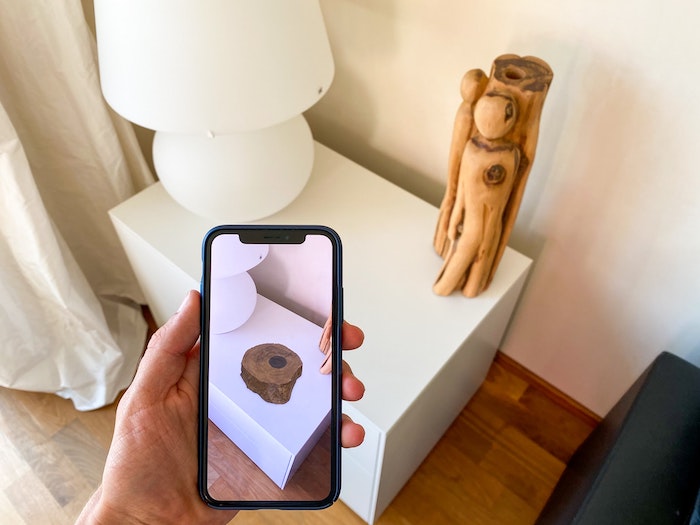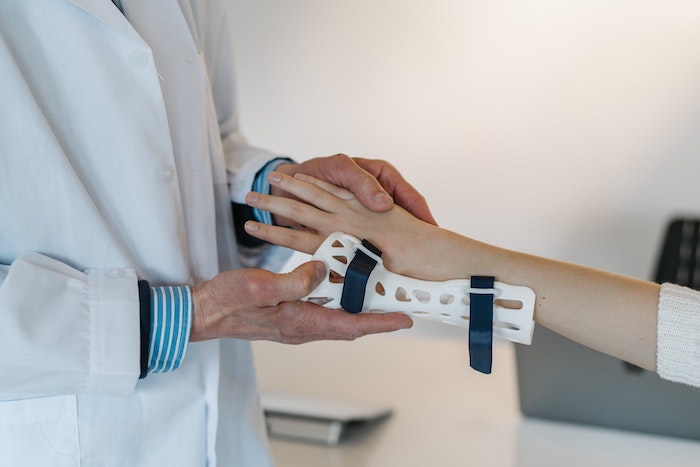10 Biggest Product Design Trends for 2021

Consumers increasingly want products that are easy to use, untethered, with smart features and voice control.
And, they increasingly demand products that talk to each other within a powerful ecosystem.
In 2021, consumers are also embracing nostalgic designs for comfort. And they want to know that the products they buy are made in a sustainable and eco-friendly way.
Here are 10 biggest product design trends for 2021:

Whether you’re a new product entrepreneur starting a business and writing a business plan for your first product, or an experienced business owner planning your 25th product line, you should understand these 10 big product design trends for 2021.
1. Artificial Intelligence, front, and center
We’ll continue to see more advances in artificial intelligence (AI) in 2021 that will make the technology and devices we use even better.
We saw this in late 2020 with Apple’s new line of iPhones. Even though many of the announced features don’t yet have strong commercial applications, Apple is leading the way with compelling AI functionality in its products that open the door to incredible new ways to use phones and other devices.
For example, AI in the iPhone 12 helps the phone take better photos, especially at night. The screen lights up automatically when you lift the phone because an AI-powered accelerometer detects movements. And, you can even send automated AI-powered text responses when you’re running late to an appointment or meeting.
With AI growing smarter every day, expect it to be used heavily in smart tech in 2021.

We just emailed the info to you.
2. Voice assistants
Consumers demand more convenience, and nothing is more convenient than using your voice to control devices.
Last year, we saw the big three’s continued evolution: Amazon’s Alexa, Google’s Assistant, and Apple’s Siri.
The smart devices from those companies, coupled with their integrated voice assistants, are being used for everyday activities, quick and simple tasks, and shopping.
Do you want to buy the items on your shopping list and have them delivered by Amazon? Ask Alexa.
Do you want to text your friends your ETA? Ask Siri.
Do you want to translate what the waiter is saying while visiting China? Ask Google.
By 2022, voice sales are projected to reach $40 Billion in the US alone.
We expect more companies to incorporate voice assistants into their products. Think refrigerators, cars, microwaves, ovens, and more. In fact, we’re increasingly seeing voice interfaces incorporated in a wide range of consumer products.
With artificial intelligence booming, it only makes sense that voice assistants are hopping on the 2021 product design trend.
3. AR + Interactivity
Improvements in mobile phones have also brought huge improvements in cameras built into those phones. Today’s smartphone cameras are so good that you can virtually plan your home with apps such as IKEA Place – just using your phone’s camera and augmented reality (AR).
Improved camera and phone technology will push more companies to add scannable codes and augmented reality apps to their marketing arsenal in 2021.
Apps and scannable codes can include the company’s history, how it was made, or recipes (if you’re buying pasta, for example).
When done well, AR features and apps offer a unique and memorable user experience. It’s almost like being in the store, but with more flexibility and less stress.
And when the world is dealing with a global pandemic that makes shopping at a physical store risky, those are huge factors that drive the rapid adoption of alternative technologies.
4. Wireless tech everywhere
Last year, many companies unveiled wireless technologies. We predicted that would happen.
Wireless technology, when implemented properly, is simple, easy to use, and convenient. Everything from phones to wearables and even home devices is being transformed into wireless powerhouses.
And that has spurred an ecosystem of wireless charging stations, wearables, smart devices, and more.
And even though many people spent much of 2020 sheltering in their homes, consumers are increasingly demanding that devices be untethered.
Products like the Apple Watch dominate the wearables market, in part because, in addition to telling you the time, you’re wearing a powerful computer on your hand. And, you can take it anywhere you go, including underwater.
5. Smart Health to the frontlines
The pandemic pushed people to focus on their health.
We predicted it last year, and we were right – smart health products are growing in popularity.
Still, 2020 made it more difficult for people to stay healthy. Many businesses, including gyms, were forced to close for most of the year.
But, companies like Peloton grabbed market share as people started buying smart health devices they could use at home.
2021 will continue to accelerate this trend. We expect more people to invest in smart exercise equipment for their home, healthy food products, and smart health devices.
With smartwatch usage skyrocketing, blood sugar trackers improving, smart exercise equipment thriving, and many new health-related apps, consumers are better equipped than ever to keep track of their health.
Plus, smart wireless health devices offer portability and flexibility, and most of them connect directly to smart exercise equipment.
6. Reduce, Reuse, Recycle
After 2020 surprised us unexpectedly, manufacturers and consumers have grown to appreciate the importance of keeping themselves and the environment healthy. This means reducing waste, reusing materials, and creating a strong recycling system.
In fact, consumers are increasingly demanding good sustainability practices from the brands they buy.
A recent survey found that about 70% of consumers would spend more to buy from eco-friendly companies (than their wasteful counterparts).
And, as we pointed out last year:
today’s consumers are looking for products with ethical messages they can get behind, companies that support local small businesses, clothing that is made to last and worthy of the investment, and products that utilize viable alternative materials.
This statement still holds for 2021.
Sustainability practices will skyrocket in 2021 as big companies (such as Amazon and Apple) pledged to bring their net carbon emissions to zero in the coming years.
Much of this trend involves companies investing in biodegradable and recyclable materials for their products and product packaging. You can clearly see this momentum in our look at packaging design trends for 2021.
7. Storytelling (telling your product’s story)
Consumers are more likely to buy products from companies that they relate to and know well.
You can improve the success of your products by incorporating your story in the product design.
As we mentioned above, AR and interactivity are a great way to incorporate storytelling in your product, but there are other great ways, too.
Personability and product design consistency (coherent designs across all products) are great ways to showcase your product and your brand values.
Take beauty product company Function of Beauty, for example. They provide custom hair, skin, and body care products based on what you need and what’s right for you. They’re committed to providing the utmost customization, which goes as far as the ingredients in the formula of the products you order.
The company’s storytelling is fantastic. Function of Beauty shows you its commitment, trustworthiness, and attention to user experience without explicitly saying it. After all, who knows your needs better than you?
In 2021, storytelling will be crucial in creating a strong and memorable product.
8. Minimalism and simplicity
Consumers don’t want to be overwhelmed. Simple designs and minimalism are hot.
In fact, minimalism is popular beyond product design. We see a return to minimalism in 2021 logo design trends, packaging design trends, and web design trends.
Take Quip’s toothbrush design. The design is simple, sleek, minimal, and effective. There’s nothing over the top and nothing complicating the overall purpose of the product.
Quip makes what you need and nothing else.
Quip’s competitors offer many lines of electric toothbrushes with increasingly complicated features.
But too many options confuse consumers and create what in marketing psychology is called a paradox-of-choice.
When consumers become frustrated with an overwhelming number of choices, they generally look for better options and a better user experience.
This is one reason why Apple products dominate across many markets. Apple has a limited number of options for their products. It’s much easier to decide which of four phones you like from Apple than to decide which of thousands of Android devices you’d consider buying.
Of course, there are exceptions to this rule. But most companies and products would benefit from avoiding creating and building complex products.
9. Old School and New School collide
Many businesses are starting to combine old school and new school product designs.
For example, clothing companies are bringing back old school graphic design.
Tech companies like Apple are getting in on the action too with the Airpods Max (retro design combined with new hi-tech features).
This combination, called “newstalgic,” helps evoke positive emotions in consumers. And it often increases sales, especially for older consumers, because it connects their childhood to adulthood, all under the roof of one product.
This trend is not surprising. We saw a similar spike in nostalgic products after 9/11 and the financial crisis of ‘08 – ’09. During those times, we just saw a revival of old products.
This time is different.
This time, products won’t just be repeats. Instead, they will have a form factor similar to the products we loved when we were younger with new and improved features that we love now.
To be successful with nostalgic design in 2021, brands will have to balance past and future product design. And, they must do this while connecting with the customer and providing the best possible experience.
10. 3D printed products
Rounding out our list of 2021 product design trends is an important one – 3D printed products.
Consumers crave something new and something unique. 3D printed products get the job done.
These custom-designed products offer a creative edge over competing products that use outdated designs.
Plus, with smarter design technology powered by AI, it is easier than ever to design and print a 3D product.
It is also faster, cheaper, and more customizable.
Say goodbye to relying on large manufacturing plants, having to create your own custom machinery, or spending weeks creating a mold. Instead, thanks to 3D printing technology, you can prototype and manufacture using just a 3D printer – all in a matter of days.
Need to update your prototype as you manufacture?
With 3D printing, this isn’t a problem. Just change the design, re-upload the file, and you’re good to go within hours.
With traditional manufacturing, this takes days, if not weeks.
So, in 2021 look for many original and authentic designs based on 3D printed products.
Conclusion
In 2021, product designers must push user experience to the front of the line while keeping consistent with their brand identity.
Consider these ten product design trends when designing new products in 2021.
Want a closer look at all design trends for 2021?
Logo Design Trends 2021: Your Essential Guide to Navigating the Biggest and Hottest Trends10 Biggest Web Design Trends for 2021
10 Biggest Marketing Trends For 2021
10 Biggest Product Design Trends For 2021
The 7 Biggest Packaging Design Trends For 2021
8 Top Book Cover Design Trends for 2021
Design Done Better
The easiest way to get affordable, high-quality custom logos, print design, web design and naming for your business.
Learn How to Grow Your Business With Beautiful Design










